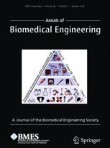
Abstract
Athletes participating in contact sports are exposed to repetitive subconcussive head impacts that may have long-term neurological consequences. To better understand these impacts and their effects, head impacts are often measured during football to characterize head impact exposure and estimate injury risk. Despite widespread use of kinematic-based metrics, it remains unclear whether any single metric derived from head kinematics is well-correlated with measurable changes in the brain. This shortcoming has motivated the increasing use of finite element (FE)-based metrics, which quantify local brain deformations. Additionally, quantifying cumulative exposure is of increased interest to examine the relationship to brain changes over time. The current study uses the atlas-based brain model (ABM) to predict the strain response to impacts sustained by 116 youth football athletes and proposes 36 new, or derivative, cumulative strain-based metrics that quantify the com bined burden of head impacts over the course of a season. The strain-based metrics developed and evaluated for FE modeling and presented in the current study present potential for improved analytics over existing kinematically-based and cumulative metrics. Additionally, the findings highlight the importance of accounting for directional dependence and expand the techniques to explore spatial distribution of the strain response throughout the brain.
Δεν υπάρχουν σχόλια:
Δημοσίευση σχολίου
Σημείωση: Μόνο ένα μέλος αυτού του ιστολογίου μπορεί να αναρτήσει σχόλιο.